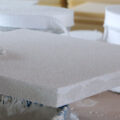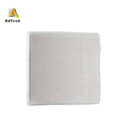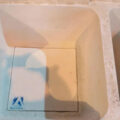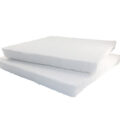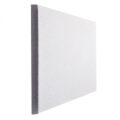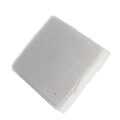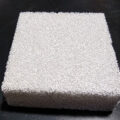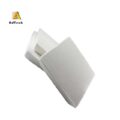In order to obtain the best mold fill rate, it is important to calculate the appropriate ceramic foam filter size for each specific casting application. The ceramic foam filter must be large enough so that it does not obstruct or block the flow of molten metal or be blocked by residual inclusions until casting is completed. To be as close as possible to the original unfiltered flow rate, the ceramic filter for foundry must be several times larger than the throttling area of the gate system.

Ceramic Foam Filter Size
In order to obtain a sufficient flow rate, the size of the Foam Furnace Filter must be adjusted so that its front area is several times larger than the total throttling area in the gating system. With the increase of filtration area/throttling area, the filling rate of mold increases exponentially. When the ratio of filtering area to the throttling area is less than 4, the pouring time of filter is significantly increased compared with that of unfiltered pouring.
When the filtration area/throttling area ratio is greater than 8, the pouring time is hardly affected by the filtration effect. If the ratio is in the range of four to eight, the pouring time may increase slightly.
It is generally recommended to use a filter area/throttling area ratio of at least 4, but for thin mold castings, this ratio should be higher. Smaller apertures will slightly increase the flow restriction of the filter and may require a slight increase in the filter area. The required filter size can be obtained by multiplying the throttling area by the required filter/throttling area ratio.
Ceramic Foam Filter Installation
Correct installation is essential to obtain the best casting effect. Expansion in the gating system is required to accommodate a larger ceramic foam filter surface area and to provide a fixed surface to mechanically hold the filter in the gating system.
Larger filters can only be used in a horizontal position. If larger filters are to be used vertically, it is recommended that some type of mechanical support be used at the unsupported edge of the top.

